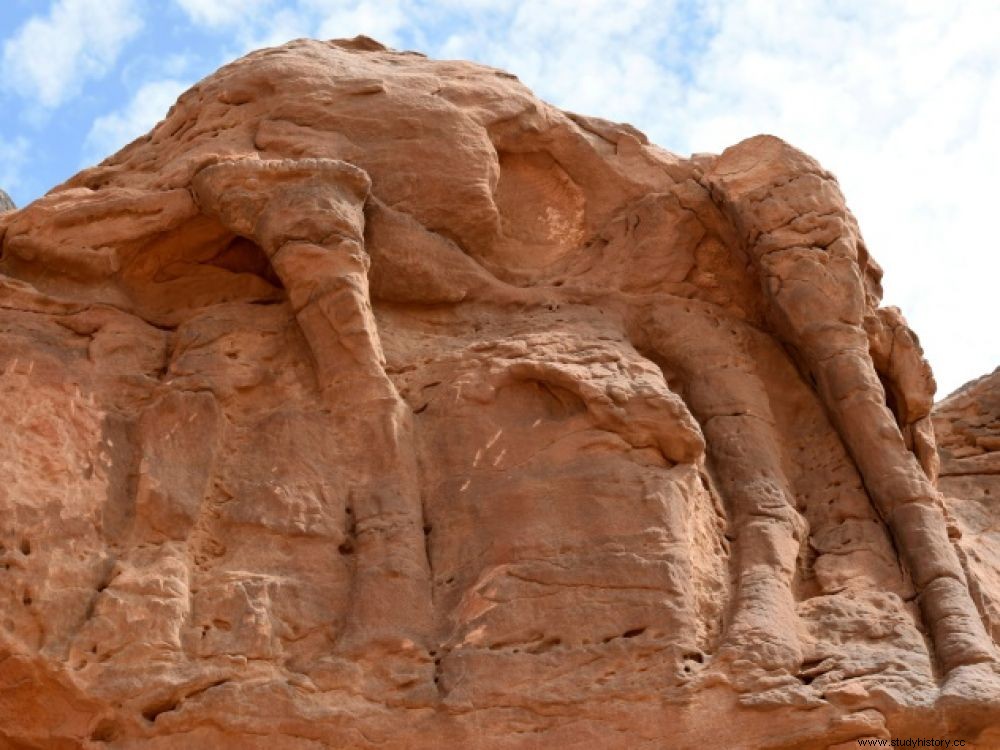Spectacular carvings of camels and equines discovered in northern Saudi Arabia are believed to be at least 7,000 years old, much older than estimated when they were unearthed a few years ago.

Sculptures discovered in the Al-Jouf desert, Saudi Arabia, on February 22, 2018
The set of 21 relief sculptures, chiseled in three rocky outcrops of the Al-Jouf desert, represent life-size animals. In 2018, archaeologists had estimated their dating to the beginning of our era, due to similarities with sculpted works from the Jordanian site near Petra, from the Nabataean period.
Much older
A research program launched with the Saudi Ministry of Culture, the German Max Planck Institute for the Science of Human History and the CNRS, has deployed an arsenal of techniques to precisely date the set, seriously eroded by time, explains the Max Planck Institute in a press release. Scientists have determined that the carvings were made during the sixth millennium BC, using stone tools, in a savannah landscape, once endowed with trees and lakes and today desert. The authors of the study, which appeared in the Journal of Archaeological Science , see the site as an example of "the period of prehistory when pastoral peoples of northern Arabia created rock art and large stone structures ".
According to them, the efforts to carve the rocks, requiring the erection of scaffolding and the fetching of stone tools 15km away, involved collective work, perhaps part of the annual ritual of a Neolithic community. . The references of certain dromedary sculptures to a reproduction cycle, itself linked to that of the dry and wet seasons, could have a strong symbolic connotation.
A symbolic site
Without being able to determine the meaning, the scientists believe that the place had a certain value for its occupants, with multiple interventions over a long period of time to rework the engravings and carvings of motifs."Neolithic communities returned regularly on the camel site, indicating that its symbolism and function have been maintained over many generations ", according to Dr. Maria Guagnin, Max Planck, lead author of the study.
